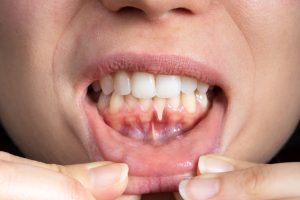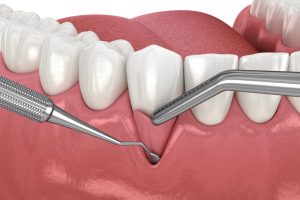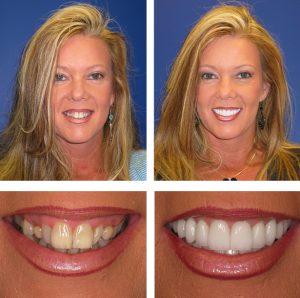PGA Dentistry: Your Partner in Periodontal Health
Periodontal disease is an extremely common problem that affects millions of Americans during their lifetime. It is caused when plaque that accumulates along the gum line starts to penetrate underneath, irritating the soft tissues of the gums. The gums play an extremely important role in supporting the position of your teeth. However, if they are affected by moderate to severe periodontal disease, their ability to do this job may be compromised. This is because patients who suffer from severe and untreated periodontal disease may find that their gums begin to recede.
Navigate your gum health options by calling PGA Dentistry at 561-627-8666, serving Riviera Beach, Palm Beach Shores, and Jupiter. Our Palm Beach Garden dentist will help you find the best periodontal treatment for you!
What is Gum Recession?
 Gum recession is the process in which the margin of tissues that surrounds the teeth begins to pull back away from them. When this happens, it exposes much more of the teeth so that they look longer than normal. In some instances, the root of the tooth may also be exposed.
Gum recession is the process in which the margin of tissues that surrounds the teeth begins to pull back away from them. When this happens, it exposes much more of the teeth so that they look longer than normal. In some instances, the root of the tooth may also be exposed.
Tooth recession also carries an additional disadvantage in that it creates tiny gaps between the teeth and gum line, where bacteria can become trapped and cause further damage to the teeth and gums.
In the past, gum grafting was considered to be the standard treatment for gum recession, and it is still a popular choice today. Nevertheless, advances in the technology used in dentistry have provided patients with another option – laser periodontal therapy.
Here we will examine the differences between laser periodontal therapy and gum grafting, which will help enable you to decide which may be the preferred treatment choice for your gum recession.
Gum Grafting

Gum grafting is a process that involves a surgical incision into the gums so that your dentist can get inside them and scrape away all of the bacteria and diseased tissue. This is performed using a local anesthetic so that you will not feel any pain or discomfort while the procedure takes place.
Once the diseased areas have been cleared away, it may be necessary to lengthen the gum tissue and reattach the gum tissue to the tooth roots. If this is necessary, the new tissues are taken from the roof of the patient’s mouth.
Although gum grafting is generally considered to be extremely successful, it is an invasive procedure, and this means that there are the usual risks involved with making an incision such as bleeding and infection. Surgery performed using a scalpel also means that packing material may be placed into the mouth to help stem bleeding and sutures will be required to close the wound. Inflammation and pain after the procedure are common, and you may be reliant on pain relief medication for up to a week while the soreness subsides.

Laser Periodontal Therapy
In laser periodontal therapy, a laser is used in place of the scalpel, but the overall process is very similar, with diseased tissue being cleared away from the pockets running adjacent to the gums and teeth. It can also be used to stimulate the healthy tissue to encourage it to regrow and reattach itself to the tooth and/or bone. Nevertheless, many people are now choosing laser therapy because of the additional benefits that it can offer.
Laser therapy is minimally invasive. This means that there is little to no bleeding, reducing the likelihood of post-procedure complications. It also eliminates the need for sutures. Laser technology also enables your dentist to perform the work with greater precision and accuracy, without the risk of human error.
Finally, because laser dentistry is less invasive, it generally means that there is much less need for anesthetic, and some patients may even find that they don’t need any anesthetic whatsoever.
Start Your Journey to Better Periodontal Health
Want to learn more about laser periodontal therapy in Palm Beach Gardens? Explore advanced gum treatments by reaching out to PGA Dentistry at 561-627-8666, serving West Palm Beach, Riviera Beach, and Palm Beach Shores.
